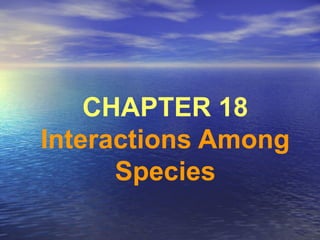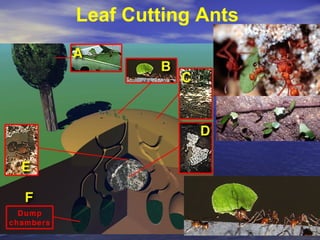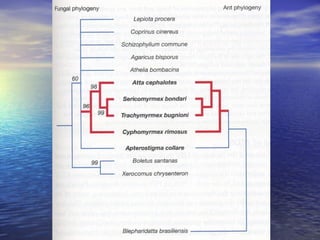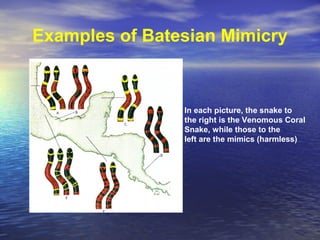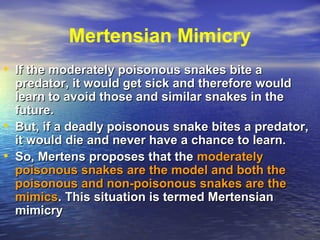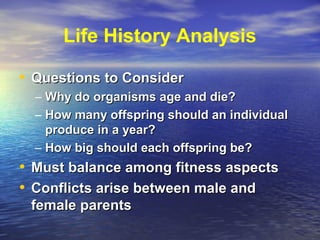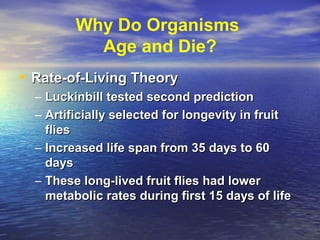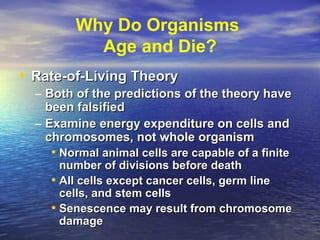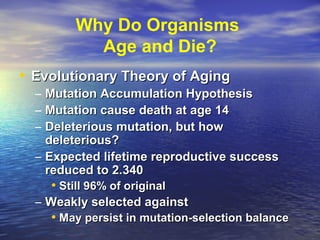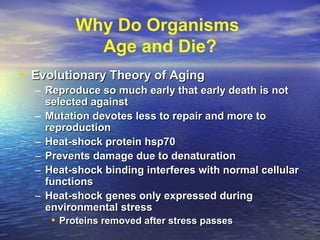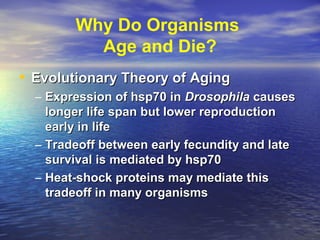This document discusses various topics related to interactions among species and evolution of life history characters. Regarding interactions among species, it covers concepts like coevolution, different types of coevolution (specific, guild, escape-and-radiate, cospeciation), and using phylogenies to study questions like coevolution. It also discusses mimicry and provides examples of different types of mimicry (Mullerian, Batesian, Mertensian). Regarding life history characters, it discusses concepts like reproductive strategies, life history analysis, tradeoffs organisms face, and two theories for why organisms age and die.
